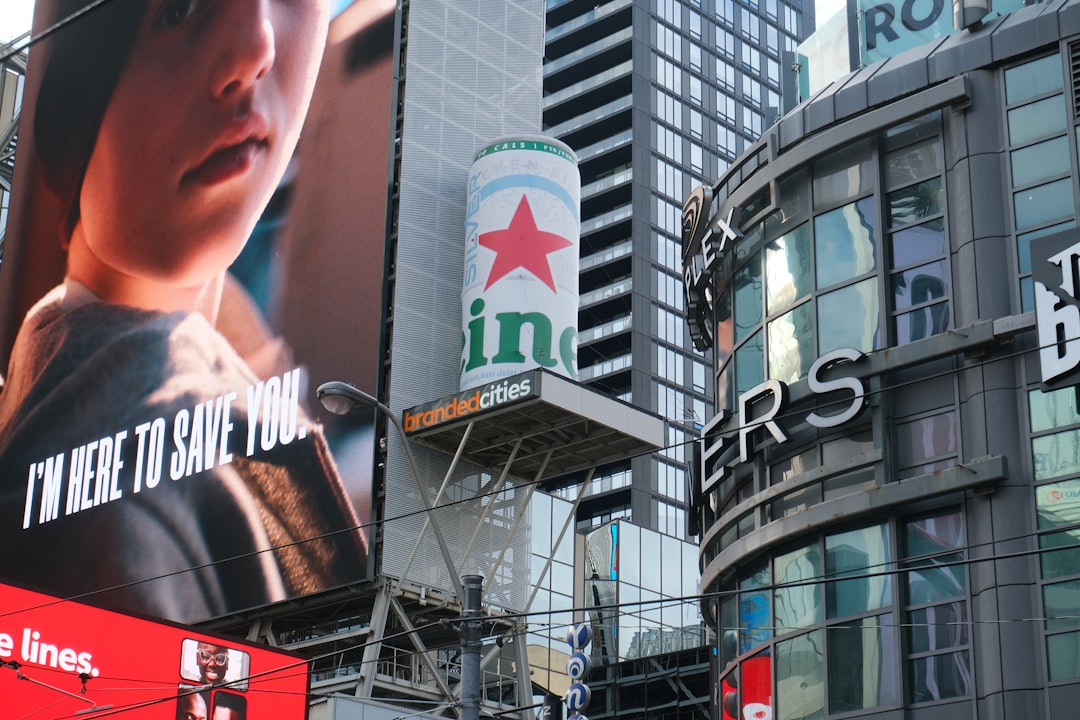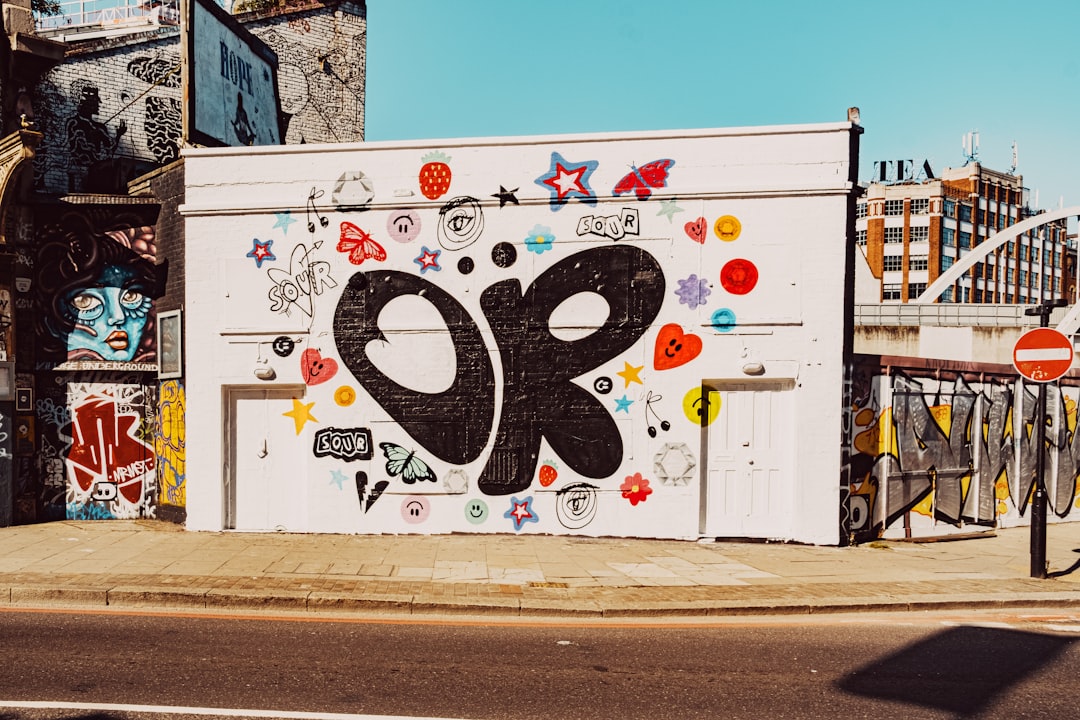

Engage prospects with a scan and streamline customer engagement with FREE QR code marketing tools by Sona – no strings attached!
Create a Free QR CodeFree consultation

No commitment

Engage prospects with a scan and streamline customer engagement with FREE QR code marketing tools by Sona – no strings attached!
Create a Free QR CodeFree consultation

No commitment
Advertising agencies face a rapidly evolving landscape where blending traditional creative excellence with cutting-edge digital marketing strategies is more important than ever. As customers interact across increasingly fragmented online and offline channels, agencies are under growing pressure to deliver not only compelling campaigns but also quantifiable business outcomes. Many struggle to connect high-value prospects such as those engaging with event materials or billboard ads that do not immediately convert or appear in CRM systems. This disconnect can leave agencies frustrated as valuable opportunities slip through the cracks, eroding campaign effectiveness and making it difficult to demonstrate true ROI to clients.
QR codes are a simple yet transformative tool that allows advertising agencies to convert every print piece or physical activation into a digital opportunity. In a climate where missed attribution and lost leads can impact both client satisfaction and agency success, QR codes offer a bridge between the tangible and the trackable. By triggering instant engagement, making omnichannel personalization possible, and unlocking granular attribution data, agencies can address persistent pain points such as anonymous traffic, fragmented reporting, and friction in moving from offline interest to online conversion.
This guide provides practical strategies for leveraging QR codes to solve industry challenges, from capturing untapped buying signals and improving conversion rates to enriching CRM data and tying offline engagements directly to revenue. Explore how QR codes can help agencies address client objections around measurement and budget justification, while enabling a new era of creative, results-driven marketing.

Traditional print, out-of-home media, and event collateral have long faced challenges in capturing actionable engagement data. Brochures, flyers, and mailers often create awareness but fail to drive immediate and measurable action. Agencies struggle to link those interactions to conversions or qualified pipeline, and as a result, high-intent prospects frequently remain invisible until they are already engaging a competitor.
QR codes turn static assets into direct-response mechanisms. When a scan takes someone from a bus shelter to a promotional landing page in two seconds, the agency captures an intent signal, continues the conversation with a relevant offer, and attributes the engagement to a specific creative and placement. Dynamic QR codes make this even more powerful by allowing you to update destinations without reprinting assets, enabling agile campaign pivots as creative, offers, or inventory change.
By streamlining first contact opportunities and ensuring accurate attribution, agencies can address lost lead frustrations and prove campaign value across client portfolios. Scan data also powers smarter retargeting audiences and proves which placements are worth scaling, turning QR-enabled creative into a reliable growth lever rather than a novelty.

A challenge for agencies is the gap between physical activations such as print ads, event displays, or branded merchandise and the digital, attributable outcomes clients demand. When a decision-maker snaps a photo of a billboard or pockets a brochure without visiting a URL, that interest is often untracked and unmeasured. Agencies lose both the lead and the story needed to validate spend.
QR codes address this gap by giving every physical touchpoint a next-best action. The scan becomes a one-tap bridge from exposure to engagement, then to attribution within your analytics stack. Because QR codes load a mobile web page without requiring a separate app, they dramatically lower activation friction while increasing the fidelity of your data.
With these capabilities, agencies can transform high-exposure formats into measurable performance drivers, helping clients understand what actually works and why it deserves continued investment.
Agencies juggle a broad set of offline touchpoints, each with different goals. A one-size-fits-all link rarely gets the best outcome. Selecting the right QR code format helps you match intent with the fastest path to value, whether it is collecting a lead, prompting a review, or delivering an app download.
The formats below cover the majority of marketing and activation needs. Use them strategically according to context, and prefer dynamic codes when you want to track, edit, or run A/B tests without reprinting.
With Sona QR, you can create, manage, and track all of these formats in one place. Use dynamic codes to test alternate destinations, personalize content by location, or rotate offers based on time of day, then measure performance at the code level.

Growth often stalls because agencies miss high-potential touchpoints that never make it into CRM or reporting systems. Audiences encounter your creative across environments where it is inconvenient to type a URL or remember a promo code. QR codes reveal these missed moments by surfacing and tracking intent signals exactly where they happen.
Audit your clients’ offline presence and your own agency collateral. Anywhere you currently show a URL, print a phone number, or ask for a manual form fill is a candidate for a QR code that accelerates the journey and captures data.
Advanced platforms can auto-sync these interactions into agency CRMs in real time, helping you prioritize follow-up and allocate budget based on concrete engagement rather than assumptions. Over time, this data set becomes a competitive advantage when pitching, planning, and optimizing.

Attribution and lead handoff issues have historically limited the effectiveness of multi-touch campaigns. QR codes align offline engagement with digital conversion and help agencies connect specific touchpoints to revenue impact.
Start with a short list of high-value use cases that map to frequent client needs, then expand as your team builds repeatable playbooks.
By integrating scan data into analytics and CRM, agencies can trace outcomes to specific assets and ensure no warm lead gets lost after a strong offline impression.
Each QR scan is a behavioral signal: what content was scanned, where the person was, when they engaged, and what they did next. By deploying multiple codes across touchpoints, you can segment audiences automatically and feed this data into email, SMS, and paid media for precise intent-driven retargeting.
Think of your QR strategy as a funnel instrument. Awareness scans from OOH or flyers represent early interest, while scans on pricing sheets, demo stations, or coupons indicate readiness to convert. With Sona QR, you can apply tags at the code level, sync segments to HubSpot or Salesforce, and push lists directly to ad platforms.
For agencies managing multiple client brands, create a standardized taxonomy for QR tags and parameters. Consistency ensures that audience building scales cleanly across campaigns, while still allowing for creative differentiation by client and channel.
Keeping campaign data siloed across print, mail, digital, and live events makes attribution difficult and hampers reporting. Embedding QR codes throughout the marketing mix creates a connected offline-to-online funnel and a consistent way to measure engagement across channels.
QR codes are not a replacement for strong creative or smart media planning. They are a connector that unlocks immediate action and reliable analytics. With a platform like Sona QR, you can manage codes centrally, monitor performance, and sync scan data to your CRM and ad accounts for a unified view.
The result is a marketing engine where every surface can become an onramp, and every interaction can be measured and optimized without adding friction for the audience.
Without a clear, repeatable process, agencies risk inconsistent experiences and data loss across campaigns. Use this framework to align stakeholders, protect data quality, and drive measurable results from the first scan.
The following steps are designed for growth marketers, operations leaders, and account teams who want to modernize analog workflows, improve customer experiences, and produce clear ROI. Sona QR supports each step with easy generation, dynamic routing, analytics, and CRM integrations.
Clarify the business outcome you want. Examples include boosting event RSVPs, increasing app downloads, or driving quote requests. For an agency planning a bridal expo sponsorship, the objective might be to capture qualified leads who want follow-up consultations.
Align the QR code’s purpose with audience motivation and context. If people are rushed on a trade show floor, link to a one-tap contact capture with a calendar option rather than a long-form questionnaire. Set the KPI before you print, such as scan-to-form completion rate or scans per booth hour.
Select static codes for fixed, non-tracked destinations such as a PDF or evergreen resource. Use dynamic codes when you need tracking, A/B testing, personalization, or the ability to edit destinations after printing.
Consider the format that best fits the action. Web links are versatile, SMS and email are ideal for immediate replies, app downloads work when an app is central to the experience, and vCards help sales teams simplify handoff. Sona QR supports all formats and lets you switch destinations or rules without reprinting. Start creating QR codes for free.
Incorporate branding elements like logo and colors, and add a clear call to action near the code such as Scan to Book Now or Scan for 15% Off. Ensure sufficient contrast and white space around the code for reliable scanning.
Test across devices, lighting conditions, and distances. Validate scannability on glossy paper, in outdoor glare, and from various angles. If placing on large OOH formats, size the code for realistic scan distances and consider adding a short vanity URL as a fallback.
Place codes where your audience already engages: conference signage, booth counters, direct mailers, window decals, packaging, or program guides. Match placement to behavior and scanning context, such as eye-level for pedestrians or near checkout counters for impulse actions.
Rotate creative or offers during the campaign lifecycle without reprinting by using dynamic links and rules. For multi-market campaigns, localize destinations to language or inventory status and measure performance by region.
Instrument your analytics before launch. Use Sona QR to track scans by time, location, device, and referring campaign. Attach UTM parameters to destinations so downstream analytics reflect the true source.
Monitor conversion behavior weekly and identify drop-off points. A/B test your landing pages, CTAs, and code designs. Feed insights into future creative briefs and media buys, and report back to stakeholders with asset-level performance that connects scans to revenue.

Agencies often struggle to connect campaign activity to bottom-line results, which makes it hard to prove value or justify budget allocations. QR codes unlock a critical data layer that links offline and online engagement, but you still need a platform that captures, enriches, and attributes those interactions across the full journey.
With Sona QR and Sona.com, you can go far beyond scan counts. Track the context of every interaction, unify fragmented touchpoints, and tie engagement to pipeline and closed-won revenue through identity resolution and multi-touch attribution. This is the difference between interesting stats and executive-ready insights.
These capabilities give agencies the transparency required to answer hard questions about spend and performance, while building repeatable frameworks that scale across clients and campaigns.
Building on early wins requires more than clever creative. Operational discipline ensures that every scan turns into usable data and real business outcomes. Many campaigns underperform because codes are not unique, CTAs are vague, landing pages are slow, or scan events never make it into the CRM.
To maximize results, standardize your processes across accounts and educate both internal teams and client stakeholders. A consistent approach to design, tracking, and follow-up will improve scan rates and downstream conversion.
Include creative deployments as you scale. For instance, add QR codes to loyalty cards that unlock personalized offers, use them on invoices to drive post-purchase surveys and cross-sells, or place them on swag that links to a resource library for extended engagement.
Real-world examples show how QR codes solve persistent pain points in attribution and conversion while enabling creativity. Use these as inspiration to design campaigns that combine strong incentives with measurable outcomes.
A digital agency increased webinar sign-ups by 35 percent by adding dynamic QR codes to print invites, OOH placements, and partner event signage. The scan opened a mobile-optimized, prefilled form, and Sona QR synced each submission to their CRM with the correct source and asset tag. The team optimized mid-flight by shifting budget toward the top-performing placements.
An out-of-home specialist attributed a 20 percent lift in retail footfall to QR-enabled billboards that rotated daily offers based on inventory. The dynamic routing behind the code let the agency test incentives region by region, and the data guided allocation for the next flight.
Creative uses also include guerrilla stunts, pop-up experiences, and interactive installations. As long as you design for scannability and pair the code with a compelling value exchange, you can turn curiosity into trackable outcomes.
Even the best concepts can falter if execution details are overlooked. The most common pitfalls involve poor code visibility, weak CTAs, slow or irrelevant destinations, and gaps between the scan and follow-up. Each of these issues reduces scan rates or causes drop-off after the scan.
Prevent these missteps with checklists, design templates, and QA processes that teams follow before anything goes live. Align on success metrics and ensure that codes, destinations, and automations are configured for the KPIs you plan to report.
By addressing these areas, agencies protect their creative investments and ensure that offline inspiration turns into measurable revenue impact.
QR codes represent more than a fleeting tech trend for advertising agencies. They are a dependable bridge between creative, physical experiences and measurable digital outcomes. When used intentionally, they reduce friction, improve attribution, and give clients the confidence to invest in channels that were once considered untrackable.
By embedding QR codes into your multi-channel strategy, you unlock higher conversion rates, stronger retargeting audiences, and a complete view of the customer journey. With Sona QR, you can generate dynamic codes, update destinations without reprints, monitor performance in real time, and sync every scan to your CRM and ad platforms. That means less guesswork, more qualified leads, and a clear line from scan to revenue.
QR codes have transformed advertising agencies from relying on guesswork to harnessing precise, data-driven conversion strategies. Whether it’s accelerating client acquisition, enhancing campaign interactivity, or delivering measurable ROI, QR codes streamline engagement and turn every marketing asset into a powerful conversion driver. Imagine having real-time insights into which ads spark interest and exactly how prospects move through the funnel.
With Sona QR, advertising agencies can effortlessly create dynamic, trackable QR codes that update instantly—no reprints needed—and link every scan directly to client outcomes. This means smarter campaign optimization, higher client satisfaction, and a clear connection between offline efforts and online revenue.
Start for free with Sona QR today and transform your agency’s campaigns into measurable, revenue-driving successes with every scan.
Advertising agencies can use QR codes to turn print and physical assets into direct-response tools that capture intent signals, enable dynamic content updates, integrate with CRM systems for lead tracking, and provide measurable attribution to improve campaign effectiveness.
Integrating QR codes into traditional advertising enables instant customer engagement, bridges offline and online experiences, provides detailed tracking and attribution, reduces friction in customer actions, and allows for agile updates without reprinting materials.
QR codes enhance customer experience by enabling quick, frictionless actions like scan-to-signup or scan-to-offer, delivering personalized and dynamic content, and simplifying access to information without requiring app downloads or manual data entry.
Examples include a digital agency increasing webinar sign-ups by 35 percent through dynamic QR codes on print and event materials, an out-of-home specialist boosting retail footfall by 20 percent with QR-enabled billboards offering daily rotating deals, and a full-service agency improving direct mail conversion by replacing static URLs with unique QR codes.
Agencies can measure effectiveness by tracking scan counts with context such as time, location, and device, monitoring conversion rates and engagement post-scan, integrating scan data with CRM and analytics platforms, conducting A/B tests, and attributing revenue through multi-touch models linking offline engagement to sales.
Use Sona QR's trackable codes to improve customer acquisition and engagement today.
Create Your FREE Trackable QR Code in SecondsJoin results-focused teams combining Sona Platform automation with advanced Google Ads strategies to scale lead generation

Connect your existing CRM

Free Account Enrichment

No setup fees
No commitment required

Free consultation

Get a custom Google Ads roadmap for your business






Launch campaigns that generate qualified leads in 30 days or less.
